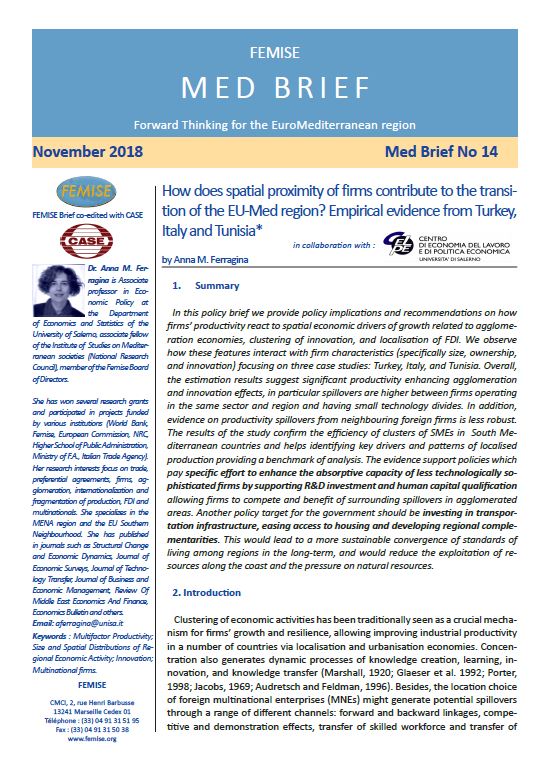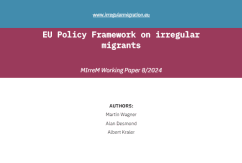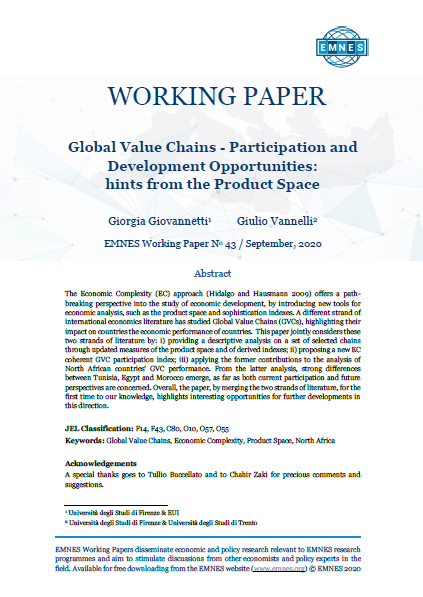FEMISE MED BRIEF n°14 : “How does spatial proximity of firms contribute to EU-Med transition ?”


In this policy brief we provide policy implications and recommendations on how firms’ productivity react to spatial economic drivers of growth related to agglomeration economies, clustering of innovation, and localisation of FDI. We observe how these features interact with firm characteristics (specifically size, ownership, and innovation) focusing on three case studies: Turkey, Italy, and Tunisia. Overall, the estimation results suggest significant productivity enhancing agglomeration and innovation effects, in particular spillovers are higher between firms operating in the same sector and region and having small technology divides.
In addition, evidence on productivity spillovers from neighbouring foreign firms is less robust. The results of the study confirm the efficiency of clusters of SMEs in South Mediterranean countries and helps identifying key drivers and patterns of localised production providing a benchmark of analysis. The evidence support policies which pay specific effort to enhance the absorptive capacity of less technologically sophisticated firms by supporting R&D investment and human capital qualification allowing firms to compete and benefit of surrounding spillovers in agglomerated areas. Another policy target for the government should be investing in transportation infrastructure, easing access to housing and developing regional complementarities. This would lead to a more sustainable convergence of standards of living among regions in the long-term, and would reduce the exploitation of resources along the coast and the pressure on natural resources.
The FEMISE Policy Brief series MED BRIEF aspires to provide Forward Thinking for the EuroMediterranean region. The briefs contain succinct, policy-oriented analysis of relevant EuroMed issues, presenting the views of FEMISE researchers and collaborators to policy-makers.





































